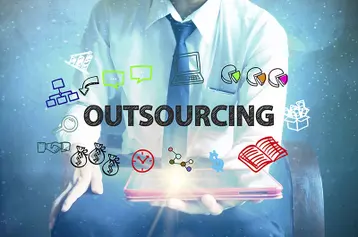
Table of contents
- 1.Why a price increase
- 2.Tying price increases to inflation?
- 3.Value proposition’s effect on pricing
- 4.Price-raising options
- 5.Explaining the increase
- 6.A communication strategy
- 7.Give patrons advance notice
- 8.Offer price lock-in options
- 9.Stress value over price
- 10.Hold informal talks
- 11.Focus on loyal customers
- 12.Role play discussions
- 13.Create a communication package
- 14.Use multiple communication channels
- 15.Stand by your decision
- 16.Drafting the announcement
- 17.A sample letter
- 18.Finally, address customers’ concerns
You’ve been watching your small or medium-sized business costs rise this past year. Supply chain shortages and the big jump in gas, raw materials, and energy prices make producing and delivering your goods and services costlier. Those pay raises you promised are now on hold. And you don’t expect rising inflation to ease up any time soon. Your balance sheet can’t sustain any more increases in business expenses. So, now, you’re thinking about doing the unthinkable: raising your customers’ prices. A price hike is always risky; you’re bound to make customers unhappy, or worse, lose their patronage. But before agreeing to raise your prices, be sure that the increase is necessary and that the way you communicate it is in your customers’ best interest.
Why a price increase
Prices for goods and services fluctuate, like other economic factors. If the costs cutting into your profits are for the short term, you may not need to raise your prices. But if costs continue to rise with no end in sight, raising your prices may be necessary to cover your expenses and possibly save your business. Jamie Dinning, senior digital executive at Smart Monkey Marketing, a UK-based company, told TriNet in an email interview that rising costs in the industry’s tools and software caused the firm to raise its own prices. The most common reasons for raising prices include:
- Covering increases in overhead costs, such as rent, wages, utilities, and transportation
- Improving the quality of goods or services
- Focusing on select customers to lower the workload
- Keeping pace with competitors
“Since communicating this price increase, our agency has had no problems to resolve. Talking to clients about pricing can be difficult, particularly if that client has been on the same pricing level since they were onboarded,” noted Dinning.
Tying price increases to inflation?
In fact, the Consumer Price Index (CPI) rose 7.5% through January 2022 and reached 8.5% by the end of March.
Tracking inflation’s impact on shifts in your profit margin at various price points can help you decide whether to raise your prices and by what percentage. The current inflation rate hasn’t lingered this long since the 1970s, according to a Harvard Business Review report. In fact, the Consumer Price Index (CPI) rose 7.5% through January 2022 and reached 8.5% by the end of March, Bureau of Labor Statistics (BLS) show. And even as companies’ profits rose, inflation cut deep into their earnings, triggering price increases across industries. In a 2021 survey by the National Federation of Independent Business (NFIB), all 540 SMBs polled cited inflation as a problem in certain areas of their operations. The membership and advocacy organization reported that 40% of SMBs plan to raise their prices by 10% in 2022 due to inflation. “Pricing fairly for the services you provide makes certain that you do not undervalue yourself in times of increased inflation and competitiveness,” Dinning noted. “Each client comes to us with varying degrees of understanding of the work we do, so we recognize that the perceived value of the services we provide will be different from client-to-client.”
Value proposition’s effect on pricing
According to marketing experts, as your product or service improves, your value proposition (VP) changes. VP is a statement about what your business does, what you plan to deliver to customers, and why they should buy from you. A VP change may merit a pricing change. Therefore businesses, especially SMBs, shouldn’t be afraid to raise their prices when their product or service improves.
Price-raising options
Business experts recognize the fallout that price increases can have on customers and businesses alike. Therefore, they recommend a range of price-changing options that could neutralize the “bad news” for customers and minimize the risks for businesses, such as:
- Charging all customers the same rates to create a sense of fairness across the board.
- Regularly scheduling price increases, either annually or through a contract, so that hikes aren’t unexpected.
- Increasing prices on select customers, an option that shouldn’t be discriminatory but based instead on customer loyalty or buying frequency.
- Allowing customers more time to pay a higher price point or less time to pay a lower one.
- Basing prices on incentives, buying terms or other variables.
Explaining the increase
Research shows that customers’ second most important concern after a price increase is the reasons for it. Honesty and transparency matter to customers, say business experts, and therefore companies should be upfront about raising their prices and why it’s necessary. To avoid customers’ backlash, companies often use deceptive terms like “price adjustment” or “price change” to describe an increase. But business experts warn against using these terms, which they believe will backfire on companies if customers uncover the deception. Be upfront about your reasons for the increase, whether it’s inflation, hikes in overhead costs, or price competition. “Our work supports a healthy ROI (return on investment) for our clients and so we did not need to approach a fee increase as a negative,” said Dinning. “The services are still competitively priced and so the language we used did not need to be apologetic.”
A communication strategy
The collective opinion in the business community is that a price increase announcement and explanation should be straightforward and clearly stated. Here are more best practices for communicating an increase:
Give patrons advance notice
Notify customers of the price increase either weeks or months ahead of the scheduled effective date. Advance notice gives customers time to review how the increase will affect their budgets and help them prepare for the change.
Offer price lock-in options
Give customers the courtesy of being able to lock in your current price before it increases.
Stress value over price
Customers who appreciate the value of your product or service may be less opposed to a price increase and more focused on quality. Dinning agrees that raising prices isn't just about increasing profits, concept he said his company’s clients understand because they run their own businesses.
Hold informal talks
Talk with customers about an upcoming price increase through informal discussions in phone chats, over lunch, or in focus groups. This approach can help prepare customers for periodic increases. Smart Monkey Marketing welcomed discussions on its price increase, which it conducted in video meetings or in-person.
Focus on loyal customers
Notify the most loyal patrons first about your price increase and deliver the news well ahead of the scheduled effective date.
Role play discussions
Practice how you will discuss the price increase with customers and your responses to possible questions or backlash to it.
Create a communication package
A communication package creates a uniform message about the increase, which employees or a sales team can use when talking with customers.
Write a plan for how to announce the increase, explain why it’s necessary, and address customers’ concerns. Include a sample announcement letter with the plan. A communication package creates a uniform message about the increase, which employees or a sales team can use when talking with customers.
Use multiple communication channels
Printed letters, emails, text messages, chats, and your company’s website are among the channels for announcing a price increase.
Stand by your decision
Customers may be less likely to accept or take seriously your price increase if you walk back your decision.
Drafting the announcement
According to the job board Indeed, price-increase announcement letters…
- Help customers prepare financially for the rate hike.
- Allow customers to decide whether to continue a relationship with your business.
- Demonstrate transparency in your pricing.
Here are 5 steps for drafting a price-increase letter:
- Address the customer by name in the greeting.
- State unequivocally the price increase and the effective date in the letter’s first paragraph.
- State the reason(s) for the increase and, if possible, include data to justify the decision in either the first or second paragraph.
- The 3rd paragraph may provide details about the increase, such as whether it’s across the board or for a specific business operation, like shipping rates.
- End the letter by thanking customers for their understanding and support of the increase, which shows that you understand any challenges they may face and that you appreciate their cooperation.
Send customers reminder notices periodically about the price increase to make sure they know and understand it. Also, offer to help customers adjust to the increase, which may include pushing back the increase’s effective date or handing over customers’ data to a new business of their choice.
A sample letter
The following is a sample letter for announcing a price increase. You can customize it for your business’s use and distribution through various communication channels: , , is increasing the price of our by on . is increasing our prices due to . . . We’re thankful for your understanding and support in helping us move forward together, especially in these challenging times. Please feel free to call us with any comments, questions or concerns you may have.
Finally, address customers’ concerns
Customer satisfaction has been 100% for Smart Monkey Marketing following its price increase, according to Dinning. But your customers may tell you that they’re unhappy about the price increase. Therefore, it pays to:
- Listen to their grievances to avoid losing their patronage.
- Try uncovering the root of their dissatisfaction.
- Explain how the price increase improves their lives, such as providing a higher quality product or more efficient service.
- Make a commitment to continue delivering them the best of what your business offers.

Valerie Bolden-Barrett
Table of contents
- 1.Why a price increase
- 2.Tying price increases to inflation?
- 3.Value proposition’s effect on pricing
- 4.Price-raising options
- 5.Explaining the increase
- 6.A communication strategy
- 7.Give patrons advance notice
- 8.Offer price lock-in options
- 9.Stress value over price
- 10.Hold informal talks
- 11.Focus on loyal customers
- 12.Role play discussions
- 13.Create a communication package
- 14.Use multiple communication channels
- 15.Stand by your decision
- 16.Drafting the announcement
- 17.A sample letter
- 18.Finally, address customers’ concerns






